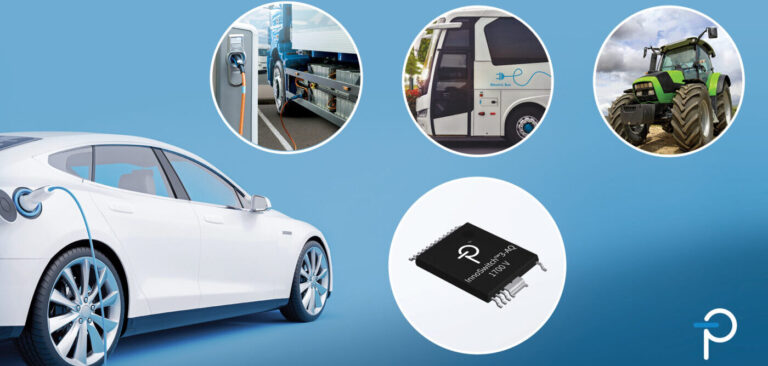California-based Power Integrations, a specialist in high-voltage integrated circuits (ICs) for energy-efficient power conversion, has added two new AEC-Q100 qualified, 1,700V-rated ICs to its InnoSwitch 3-AQ product family.
The company says that the devices are the industry’s first automotive-qualified switching power supply ICs to incorporate a silicon carbide (SiC) primary switching MOSFET. Delivering up to 70W of output power, the ICs are targeted for use in 600V and 800V battery and fuel-cell electric passenger vehicles, as well as electric buses, trucks and a wide range of industrial power applications.
According to the manufacturer the use of its highly integrated InnoSwitch ICs reduces the number of components required to implement a power supply by as much as 50%, saving circuit-board space, enhancing system reliability and mitigating component sourcing challenges. Devices from the InnoSwitch family are now available with a choice of cost-effective silicon, high-efficiency gallium nitride (GaN) and high-voltage SiC transistors, permitting designers to optimize their power solution across a broad range of automotive applications.
Peter Vaughan, director of automotive business development at Power Integrations, said, “800V batteries are becoming standard for EVs. Multiple vehicle systems are connected to this powerful electrical source, yet delicate electronic control circuits require just a few volts for operation and communication. InnoSwitch devices allow the electronics to safely sip from the firehose of energy available on the main bus, using minimal board area and without wasting energy. Most exciting is the opportunity to dramatically simplify the emergency power supply for the main traction inverter, which may be called upon at a moment’s notice to operate from any voltage between 30V and 1,000V. Our SiC-based InnoSwitch3-AQ devices handle this vast range with incredible ease.”
Offered in a compact InSOP-24D package, the ICs use a what the company calls a FluxLink feedback link, providing reinforced isolation up to 5,000V RMS for secondary-side control. FluxLink technology enables direct sensing of the output voltage, providing benefits such as accurate regulation and extremely fast transient response. The circuit will start from 30V without external circuitry – critical for functional safety. Additional protection features include input under-voltage, output over-voltage and over-current limiting.
The inclusion of synchronous rectification and a quasi-resonant (QR)/CCM flyback controller achieves greater than 90% efficiency, meeting the strictest OEM requirements. Furthermore, the parts consume less than 15mW at no-load, which is ideal for reducing self-discharge in battery management systems.


